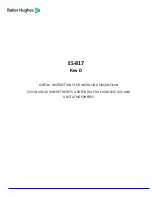
Open on increasing Signal
The positioner is a force-balanced instrument that provides a control valve posi-
tion proportional to the pneumatic input signal. The control valve will
close
on loss of
input signal. The energy to operate the control valve is obtained from the differential
between the supply and discharge pressures. In steady state, the forces imposed on
the balance beam by the input signal diaphragm and the range spring are equal;
therefore, the distance between the top and bottom seats and nozzles in the posi-
tioner is equal. This causes the cylinder top and bottom pressures to be equal, and
the control valve is stationary. An increase in the input signal pressure results in the
upper seat being pushed into the upper nozzle due to an imbalance in the beam
forces. At the same time, the bottom seat moves away from the bottom nozzle.
This increases the pressure in the cylinder top, while the pressure in the cylinder bot-
tom decreases. The control valve begins to open. The actuator rod stretches the
range spring, increasing its tension. This force, which opposes the force on the bal-
anced beam caused by the increasing input signal, continues to increase until the
balance beam forces are in equilibrium. At this point the valve is in the correct posi-
tion for the applied input signal. The positioner’s sensitivity adjustment effects the
responsiveness of the positioner nozzles. The greater the seat and nozzle sensitiv-
ity, the greater the accuracy of the positioner.
HPP-4 Positioner
“How-It-Works”
Power Gas and Cylinder Bottom
Cylinder Top
Exhaust
Instrument Signal
HPP-4
6
September 1999




















